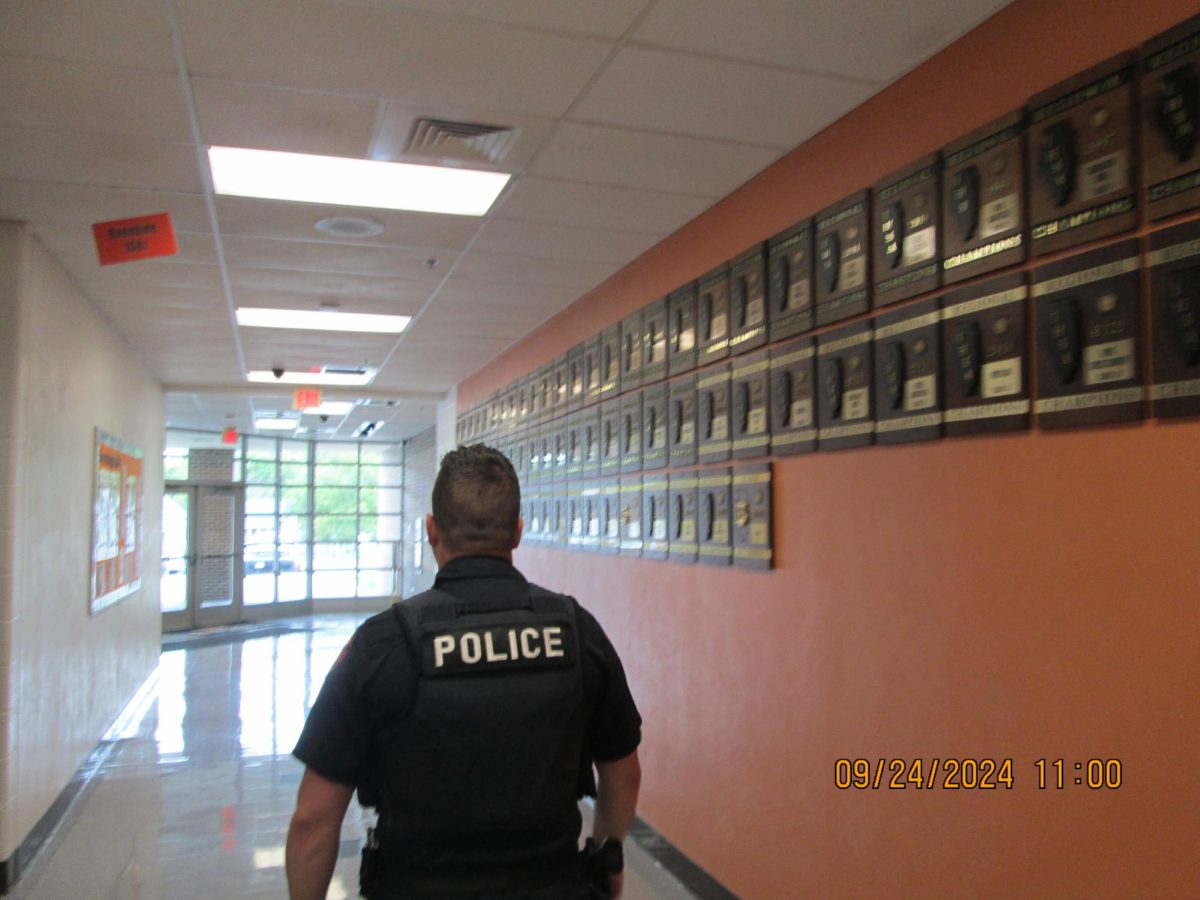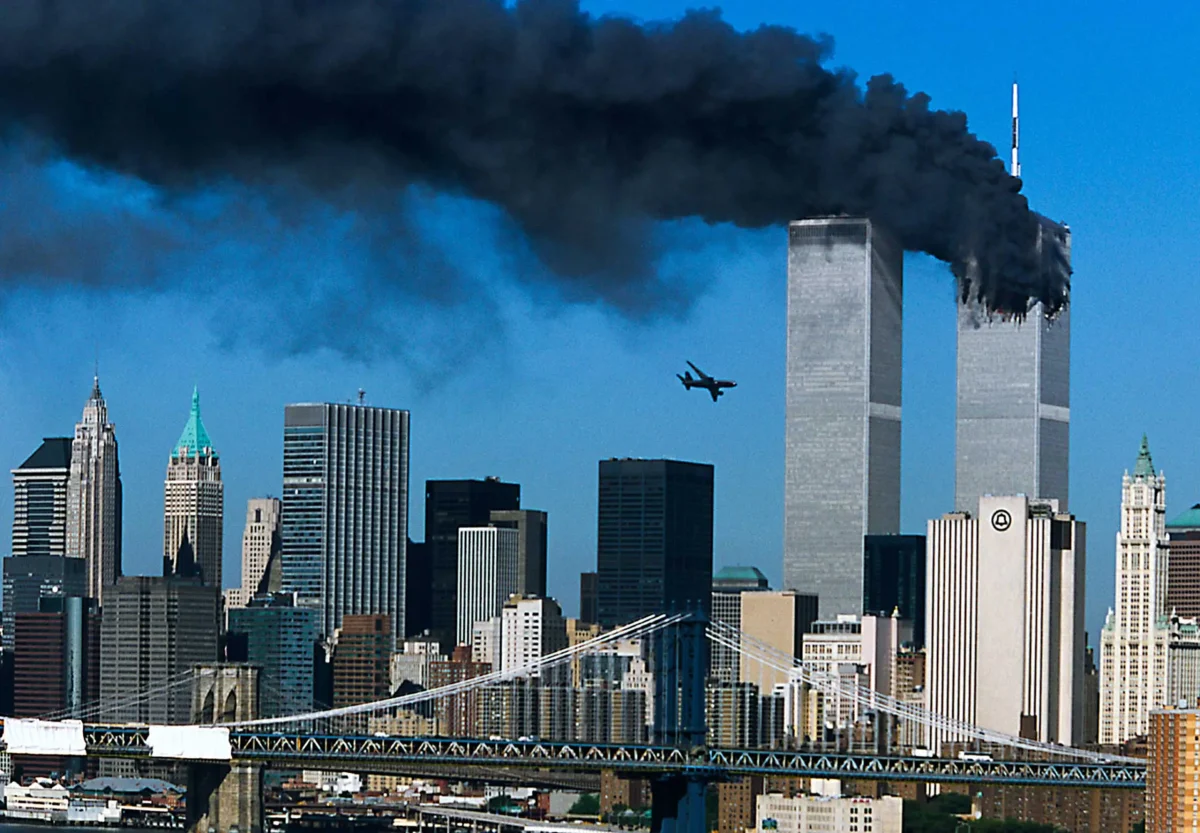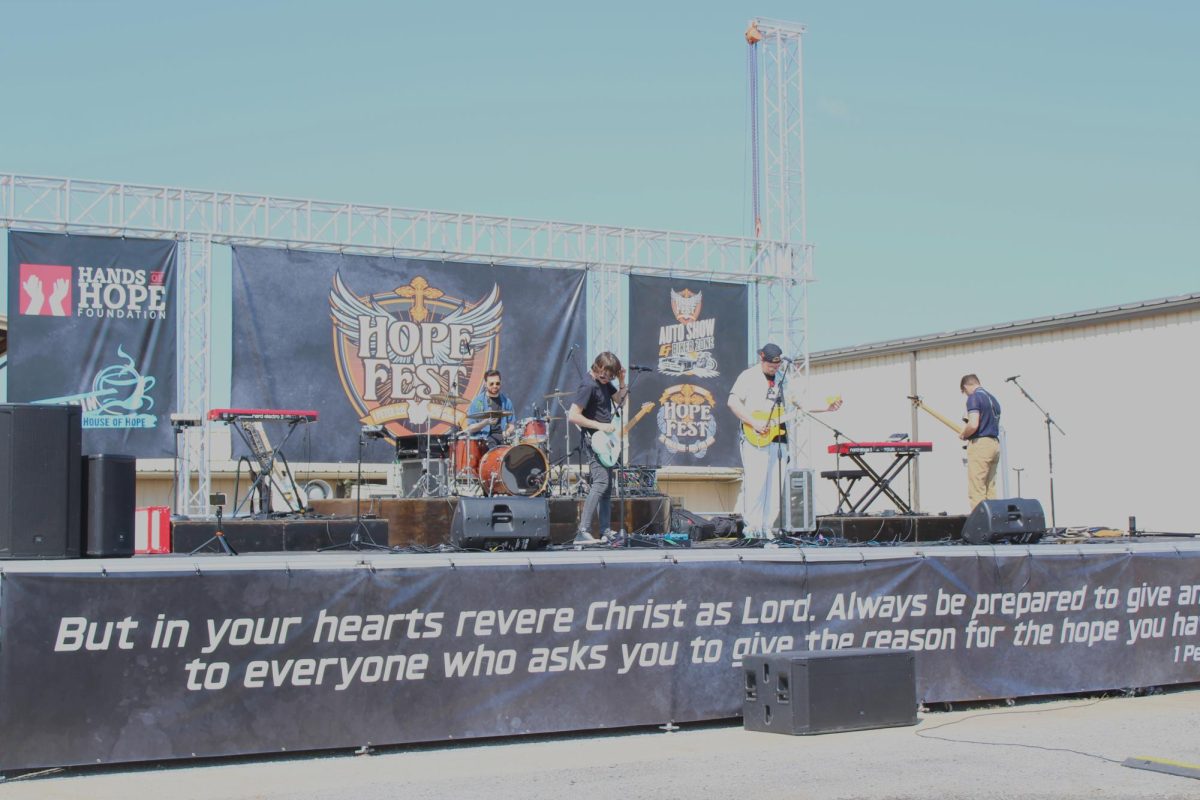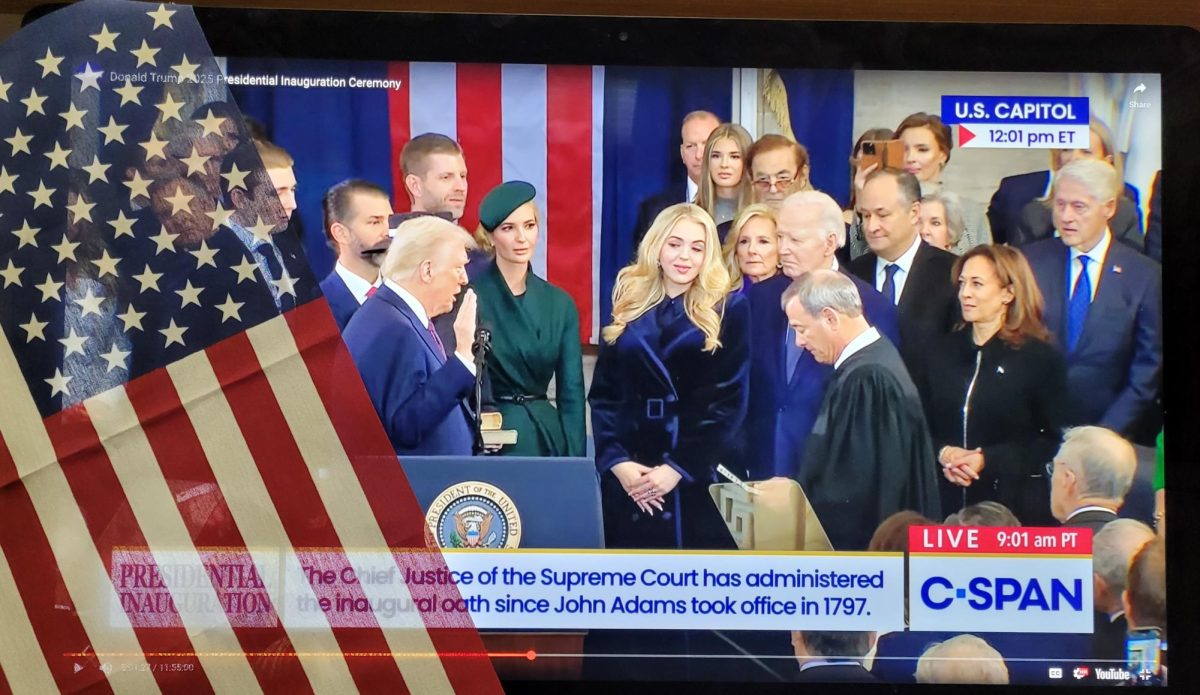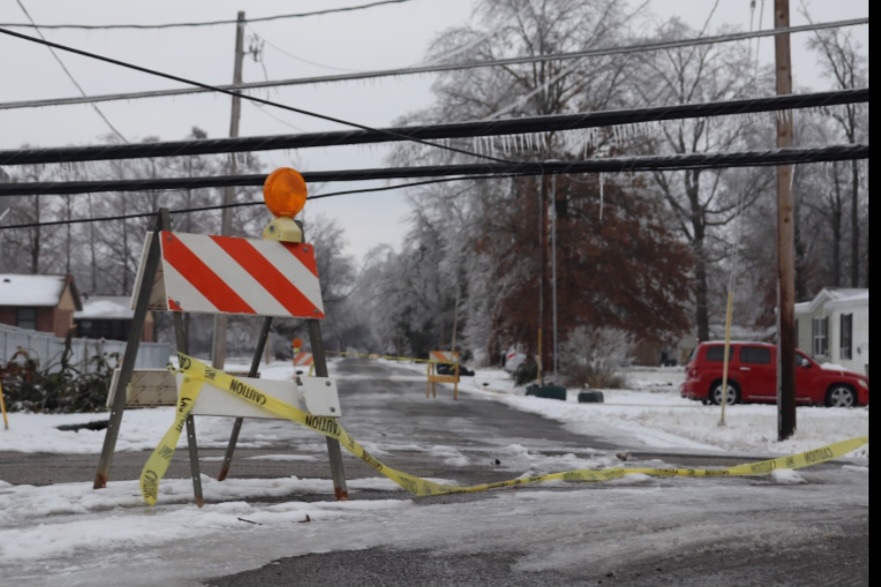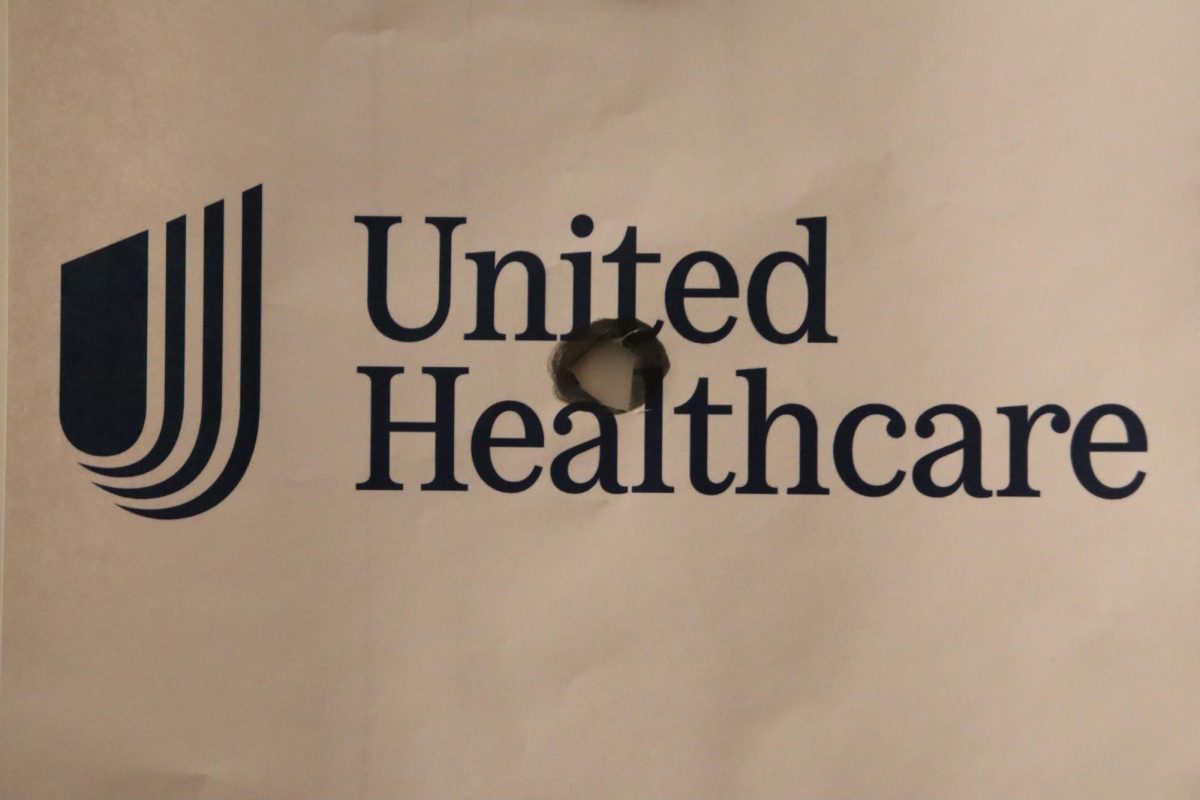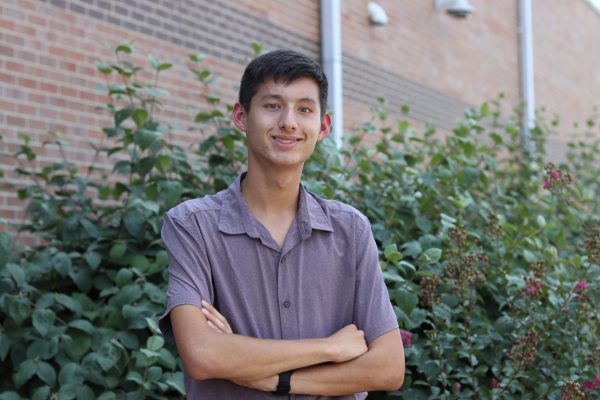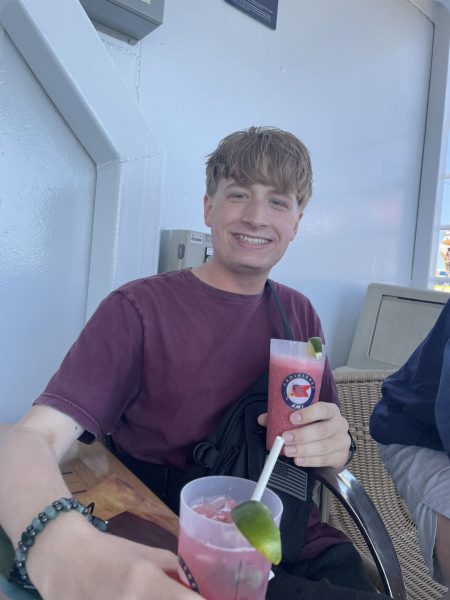September fourth was supposed to be like any other day at Apalachee High School, a larger high school in a community northeast of Atlanta, Georgia.
The morning started as usual, as hundreds of Apalachee Wildcats walked through the same halls as they did every morning, gathering the supplies they would need for the first few classes. Teachers were preparing their lessons for the day. Students were looking forward to the home volleyball game later that afternoon. It was supposed to be a normal day and all students were supposed to be safe.
But at 10:20 a.m., a 14-year-old gunman went on a rampage. Panicked students barricaded the doors, grabbing chairs, desks, and anything they could find. Many students cried, others screamed, and some prayed. Teachers reassured students that it was just a drill that would be over soon, despite knowing the reality of the situation.
Three were killed, including two students. Three families have a loved one now missing from their lives, while the loss of life and trauma greatly impacted many more.
September fourth, a day that was supposed to be like any other at Apalachee High, was instead a disastrous day whose events damaged the lives of so many people.
The suspect, 14-year-old Colt Gray, was arrested immediately following his attack. Upon investigation, it was discovered that Gray had a history of violent tendencies and was even investigated by the FBI for online threats to schools. His father was later arrested for providing his son with the weapon in Dec. 2023.
Despite all the apparent justice, a question remains: what can be done to stop these events from happening?
From a statistical standpoint, the risk of a school shooting or incident is extremely low, with the chances of one occurring at a specific school on a given day standing around one in 614,000,000. Of course, most people don’t examine a situation like this by mere statistics and instead look for protection out of fear of an attack.
No parent wants to worry about whether their child is going to be safe at school, and no child wants to face the trauma and fear of a school attack. So what are the opinions of students at HHS on how to keep our community and school safe?
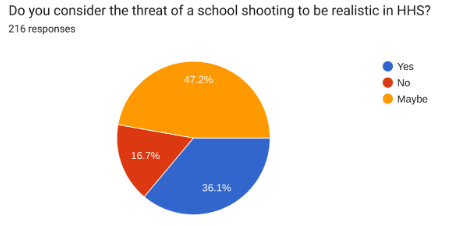 Of the 216 students surveyed, 47.2% are uncertain whether a shooting is a realistic threat to HHS. However, the second group is just behind the first, with 36.1% of those surveyed believing that such a threat is realistic. Only 16.7% responded that they don’t consider such a threat to be a potential reality.
Of the 216 students surveyed, 47.2% are uncertain whether a shooting is a realistic threat to HHS. However, the second group is just behind the first, with 36.1% of those surveyed believing that such a threat is realistic. Only 16.7% responded that they don’t consider such a threat to be a potential reality.
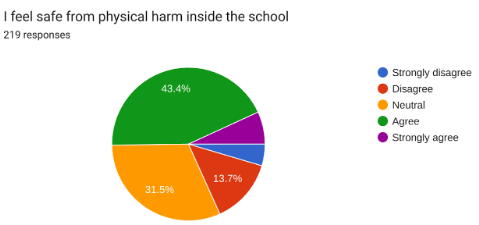 On that subject, out of 219 students surveyed, 50.2% agreed that they feel safe from physical harm inside the school. A fewer 31.5% were neutral on the topic, while 18.3% of students felt unsafe to some extent.
On that subject, out of 219 students surveyed, 50.2% agreed that they feel safe from physical harm inside the school. A fewer 31.5% were neutral on the topic, while 18.3% of students felt unsafe to some extent.
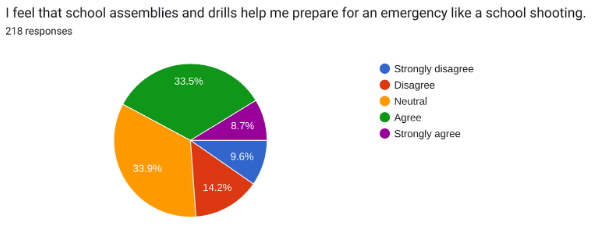 On whether or not assemblies and drills help prepare students for an emergency, 33.9% said they were neutral on the topic. 42.2% agreed to some extent; 23.8% disagreed to any extent. Even so, drills and assemblies are conducted to educate students and teachers on what to do in the case of an attack.
On whether or not assemblies and drills help prepare students for an emergency, 33.9% said they were neutral on the topic. 42.2% agreed to some extent; 23.8% disagreed to any extent. Even so, drills and assemblies are conducted to educate students and teachers on what to do in the case of an attack.
However, Herrin students expressed opinions regarding what else can be done.
For instance, many students thought that HHS should have metal detectors and an increased volume of resource officers patrolling the school. One anonymous interviewee said: “Put a resource officer in every school in America. Not only will it help stop fights but also shootings.”
Another student addressed their concern with outlets to report what they saw. “I feel we should have more resources to talk about threats. For example, I wish we had an anonymous place to submit things you find shady, such as someone talking about a fight or talking very much about guns.”
However, there is an answer to both concerns above — Herrin High School keeps a resource officer, Officer Mocaby (among others), whom students are encouraged to approach with concerns for law enforcement. While some students are worried about confidentiality in reporting their suspicions, he counsels: “You can anonymously call the police department or the school. Confidentiality is important in law enforcement. Outside of extreme circumstances, law enforcement would respect that. It’s a need-to-know basis. Don’t worry about people knowing.”
However, some students (instead of turning to an increase in school security) turned to gun control.
One such student stated that there should be a: “Gun ban. A child’s life is more valuable than all of the guns in the world.”
Another student wanted to see “more regulation over guns and who can get them through tests for mental stability and a background check at the least.”
By contrast, another student thought that: “Every teacher should have a gun in their desk in a locked case just in case the shooter gets into the classroom.”
However, some do not believe the issue is entirely connected with weaponry. Ms. Sabens, an HHS Guidance Counselor, said: “I think it’s tied to mental illness. You can’t be firing on all cylinders if you choose to commit violent acts.”
In terms of what can be done to rectify the issue, Ms. Sabens proposed: “Pre-screening with students like with the Panorama Survey we have here can help. Sometimes people are going to do what they’re going to do. But, it’s hard to catch all the things. It’s also challenging to get students to answer.”
If students have concerns, they should contact their school counselors, who have degrees in psychology. Ms. Sabens says that mental health is something no one should carry on their own. “Always involve an adult — anybody. Let an adult help you navigate.”
“I think being able to communicate a little better about emotions could help stop school shootings,” said an anonymous interviewee.
Thinking on communication and relations, one anonymous HHS staff member observed that: “Children are left alone too much or allowed to watch TV or play video games on their own instead of interacting with their families. Many don’t know how to reach out and make friends. This isolation can cause — if it’s not observed by family members or school staff — some to become so secluded that they may begin to hate others within their school.”
Opinions abound as to the proper solution for this issue. Students should take time to educate themselves to formulate their own opinions. Whether one believes gun control to be the source of the issue, or if they place the responsibility on mental health, the issue is nevertheless prevalent in high schools across the United States, not even exempting our Herrin High.



